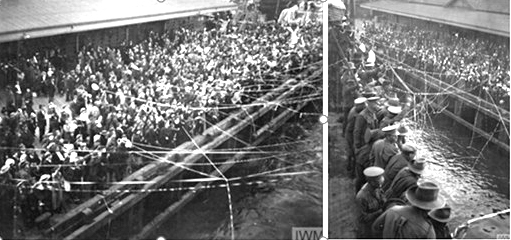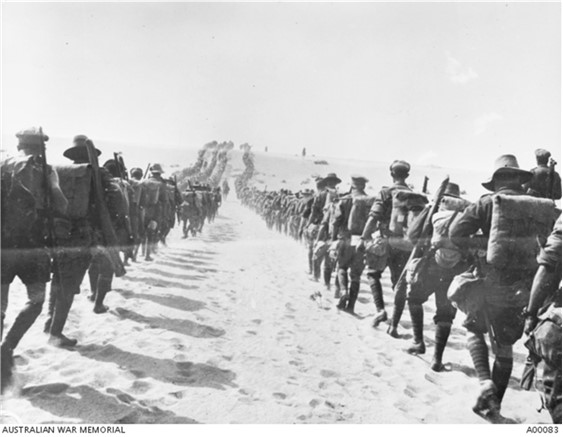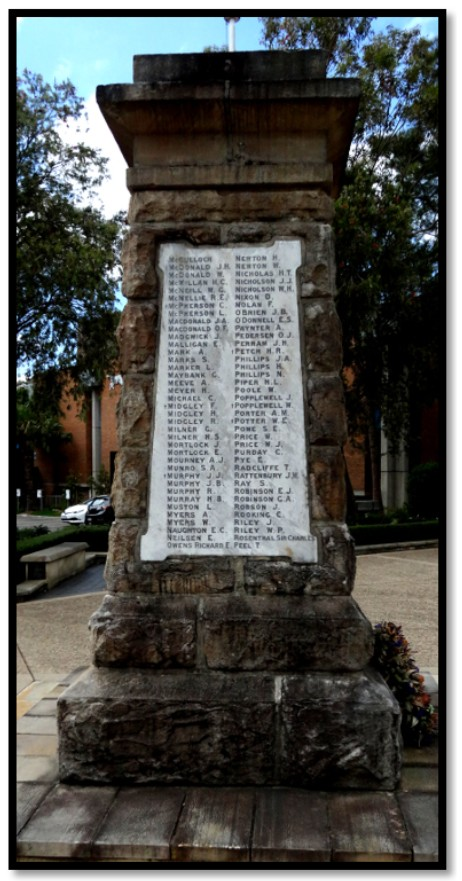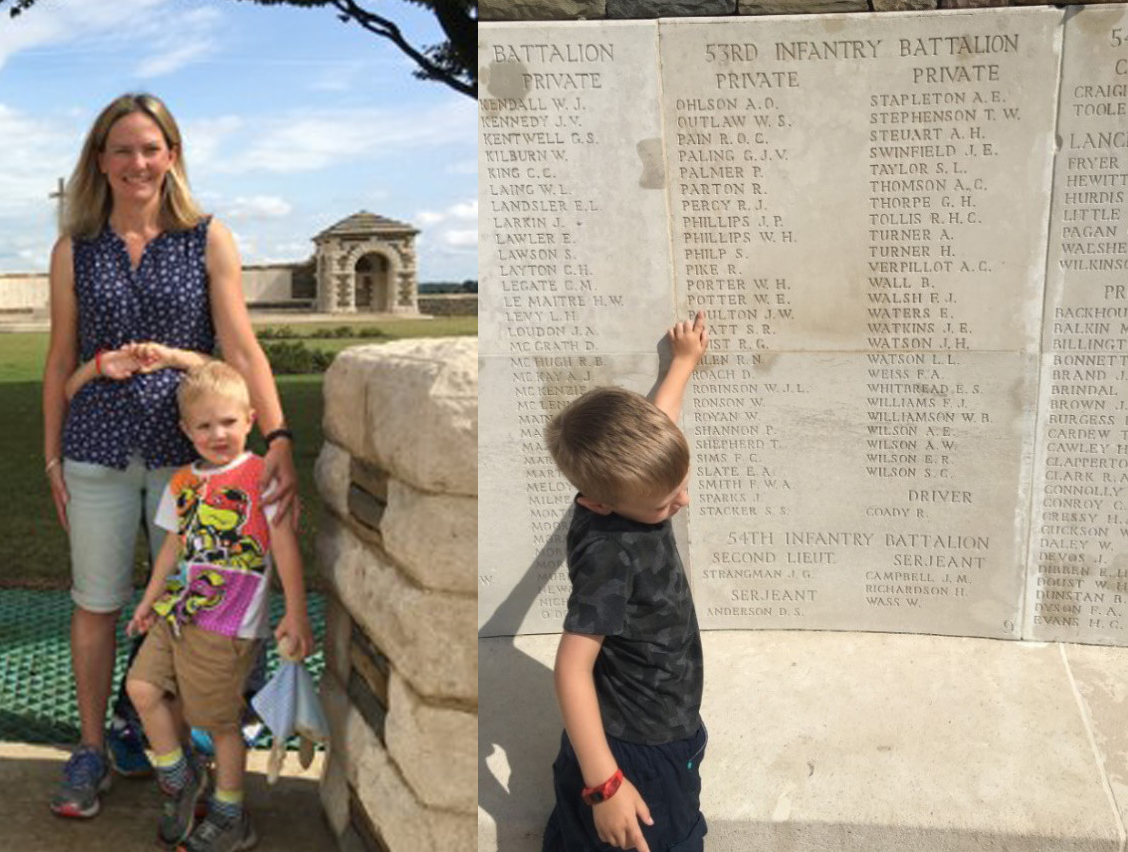Walter Ernest POTTER
Eyes brown, Hair dark, Complexion dark
Walter Ernest POTTER – A Norfolk Son in the 53rd
Can you help find Walter?
Walter Ernest Potter’s body was never found after the Battle of Fromelles, and there are no records of his burial.
A mass grave was found in 2008 at Fromelles, a grave the Germans dug for 250 Australian soldiers they recovered after the battle. As of 2024, 180 of these soldiers have been able to be identified via DNA testing.
Walter may be among these remaining unidentified men. There is still a chance to identify him — but we need help. We welcome all branches of his family to come forward to donate DNA to help with his identification, especially those with roots in Roydon, Norfolk.
See the DNA box at the end of the story for what we do know about his family.
If you know anything of contacts for Walter, please contact the Fromelles Association.
Early Life
Walter Ernest Potter was born on 19 April 1890 in the village of Roydon, near the market town of Diss in Norfolk, England. He was baptised at the age of fourteen on 19 August 1904 in Diss, a ceremony that confirmed his birth date and linked him to the parish of St Remigius in Roydon. Today, his name is inscribed on the village war memorial in the churchyard.

He was the second youngest of seven children of William Robert Potter (1854-1917), and Mary Ann Alderton (853-1929). William and Mary Ann were both born in Ipswich Suffolk, and married there in 1872.
Their children were:
- William James Potter (1874–1913) – married Rosa Alice Mann (1878–1952)
- Alice Potter (1877–1945) – medical nurse
- Alfred Edward Potter (1881–1926) – married Harriet R. Howes (1880– )
- Edith Ellen Potter (1884–1964) – married George Ernest Chapman (1890–1939)
- Lilly May Potter (1887–1950) – married Charles Edward Thurlow (1887– )
- Walter Ernest Potter (1890–1916)
- Frederick Arthur Potter (1892–1964) – married Sabina Martin (1893–1977)
Walter attended the local County Council School in nearby Diss. By the 1911 Census, aged 20, he was working as an assistant baker in his father’s bakery business in Roydon.
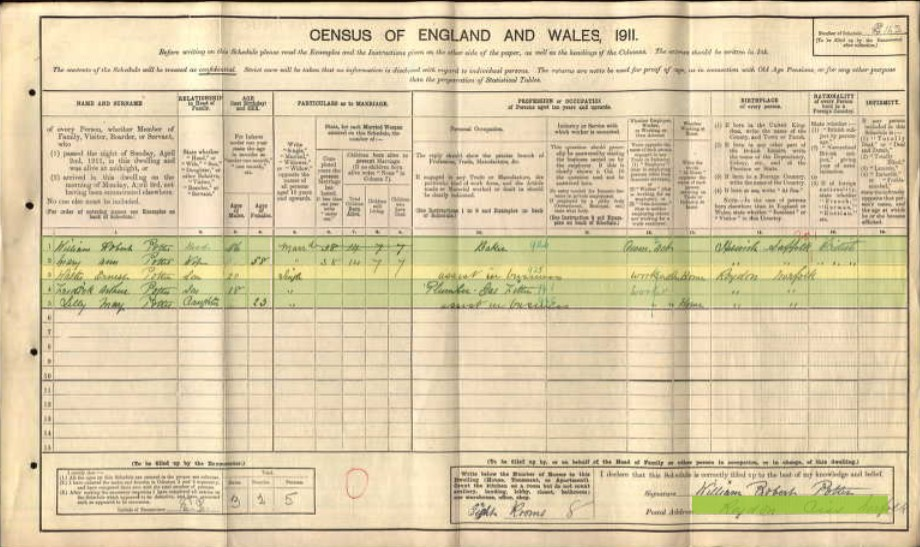
At the age of 22, around 1912, Walter emigrated to New South Wales, becoming the only member of his family to settle in Australia at the time. By February 1914 he had joined the NSW Government Railways as a labourer in the Locomotive Branch at Eveleigh Locomotive Depot, working as a fuelman responsible for coaling and servicing locomotives.
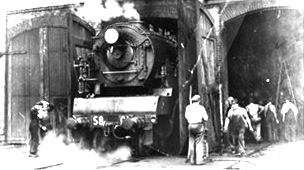
His employment card records him beginning probation on 18 February 1914 and becoming permanent later that year. By 1915 Walter was boarding at Ivanhoe Cottage, East Parade, Sutherland, living with George Wood and Isabella Wood and their family. Walter had come out on the same ship as engineer George Wood and son George on the SS Ionic. They would become his “Australian family” and he left them half of his modest estate in his will before embarking.
It was also Mrs Wood who later wrote to Base Records about his death and unclaimed pay, highlighting the bond between them.
Off to War
On 5 August 1915, Walter joined a group of fellow NSW railwaymen at Warwick Farm to enlist in the AIF. Like many railway employees, he went in with mates from the depot, knowing they would likely serve together. Walter was allotted to the 2nd Battalion, 11th Reinforcement, one of the units being built up to replace casualties from Gallipoli. On 2 November 1915 he sailed from Sydney on HMAT Euripides, one of thousands of Australians leaving home for a war on the other side of the world.
Walter’s NSW Railways employment card recorded a transfer to the Waterfall Locomotive Depot on 1 December 1915. This was a paper transfer done after he embarked — a common practice to balance staffing numbers between depots and keep a man’s job secure for his return. His name would later be added to the Waterfall Roll of Honour alongside other railwaymen who served and died.
We know Walter enlisted and embarked with three railay mates from Waterfall, James Shaw (3411), Percival Ward (3445) and Leonard Keating (3332), all 2nd Battalion 11th Reinforcements. Pericaval and Walter went to the 53rd battalion, his three mates survived the war, but Percival had been wounded and repatriated. Disembarking in Egypt in early 1916, Walter trained with the 1st Training Battalion in the desert camps before being taken on strength of the newly formed 53rd Battalion at Tel-el-Kebir on 16 February.
With the ‘doubling of the AIF’ as it expanded from two infantry divisions to five, major reorganisations were underway. The 53rd Battalion was formed on 16 February 1916 and was made up of Gallipoli veterans from the 1st Battalion and the new recruits from Australia. The Gallipoli soldiers in the 53rd were not slow in pointing out to whoever would listen that they were the “Dinkums” and the new recruits were the “War Babies”.
Source: - AWM4 23/70/1, 53rd Battalion War Diaries, Feb-July 1916, page 3
In March they were sent to Ferry Post, on foot, a trip of about 60 km that took three days. It was a significant challenge, walking over the soft sand in the 38°C heat with each man carrying their own possessions and 120 rounds of ammunition. Many of the men suffered heat stroke.
Once there, they remained at Ferry Post guarding the Suez Canal from any potential threats posed by the Ottoman Army until 16 June when they began the move to the Western Front. 32 officers and 958 soldiers of the 53rd left Alexandria on 19 June on the troopship HMT Royal George, bound for Marseilles, France to become part of the British Expeditionary Force (BEF) on the Western Front. They arrived in Marseilles on 28 June and immediately entrained for a 62-hour journey north to Hazebrouck before finally marching into the camp at nearby Thiennes in northern France.
During their trip it was noted that their “reputation had evidently preceded them”, as they were well received by the French at the towns all along the route. Source - AWM4 23/70/2 53rd Battalion War Diaries February - June 1916, p. 4
This area near Fleurbaix was known as the “Nursery Sector” – supposedly a relatively quiet area where inexperienced Allied troops could learn the harsh realities of Western Front trench warfare against the Germans. But the quiet times and the training period did not last long.
Battle of Fromelles
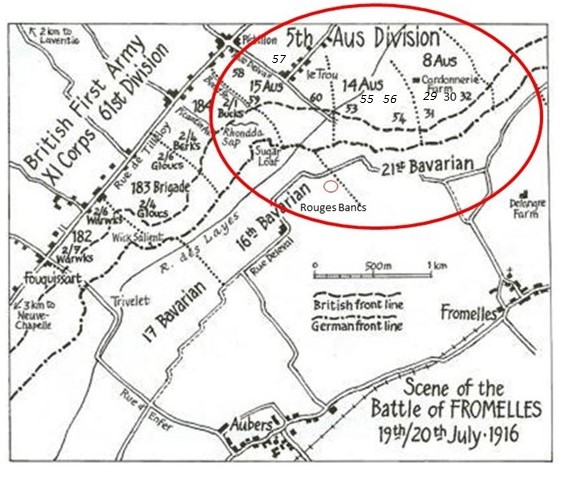
On 10 July, the 53rd entered trenches for the first time. Rain flooded the communication trenches, artillery fire harassed supply lines, and the soldiers dug in amid the mud and barbed wire of No-Man’s-Land.
The 53rd then rotated between billets and the line. The men knew something was coming. They rehearsed attacks in replica trench systems, inspected bayonets, and watched as huge guns rolled into place behind the lines. Then on 16 July, they moved up for an attack on the 17th, only to have it postponed due to weather. The delay proved torturous. Private Jim Granger (4784), a young Dorrigo soldier described the tension in his dugout:
“We were held in suspense for three days… like a criminal waiting to hear the verdict. We had no dugouts where we were in the supports and shrapnel was bursting all round.”— Pte. Jim Granger, 53rd Battalion
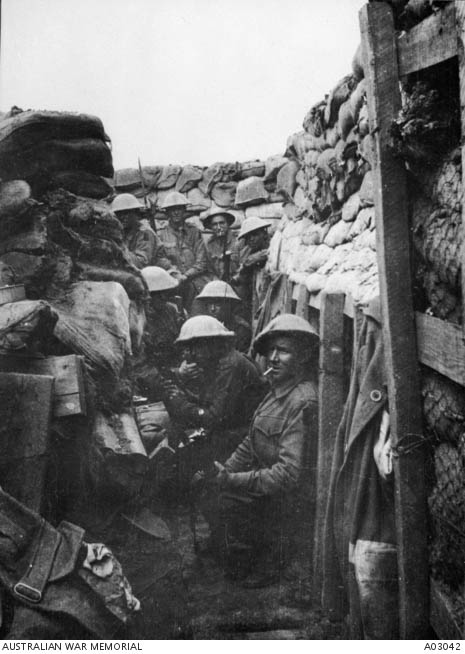
On 19 July, heavy bombardment was underway from both armies by 11 a.m. At 4.00 PM the 54th Battalion rejoined on their left. All were now in position for battle. Zero Hour for advancing from their front-line trenches was to be 5.45 p.m., but the Germans knew this attack was coming and were well-prepared. They opened a massive artillery bombardment on the Australians at 5.15 p.m., causing chaos and many casualties. The main objective for the 53rd was to take the trenches to the left of a heavily armed, elevated German defensive position, the “Sugar Loaf,” which dominated the front lines.
If the Sugar Loaf could not be taken, the 53rd and the other battalions would be subjected to murderous enfilade fire from the machine guns and counterattacks from that direction. As they advanced, they were to link up with the 60th and 54th Battalions on their flanks. The Australians went on the offensive at 5.43 PM. They moved forward in four waves – half of A & B Companies in each of the first two waves and half of C & D in the third and fourth.
They did not immediately charge the German lines; they went out into No Man’s Land and lay down, waiting for the British bombardment to lift.
Private Arthur Norton Crewes (4755) wrote of the time:
“At 5.43 pm the signal for the charge sounded, and over the top we went into the face of death, shells bursting, machine guns rattling and rifles crackling.”
At 6.00 PM the German lines were rushed. The 53rd were under heavy artillery, machine gun and rifle fire, but were able to advance rapidly and Corporal John Thomas James of C Company (3550) reported:
At Fleurbaix on the 19th July we were attacking at 6 p.m. We took three lines of German trenches”
The 14th Brigade War Diary noted that the artillery had been successful and “very few living Germans were found in the first and second line trenches,” but within the first 20 minutes the 53rd lost all the company commanders, all their seconds-in-command, and six junior officers.
Source - AWM, C.E.W. Bean, The AIF in France, Vol III, Ch. XII, p. 369
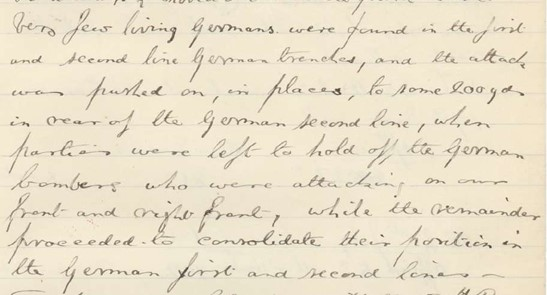
Walter was among the hundreds who went over the top in those first waves. Somewhere out in No Man’s Land, under the enfilade fire sweeping across from the Sugar Loaf, he was killed during the initial rush. His body was never recovered from the battlefield. Some of the advanced trenches were little more than water-filled ditches, which needed to be fortified by the 53rd to hold their position against counterattacks.
They were able to link up with the 54th on their left and, with the 31st and 32nd, occupy a line from Rouges Bancs to near Delangre Farm, but the 60th on their right had been unable to advance due to the devastation from the Sugar Loaf. Through the night they held on against “violent” attacks from the Germans, but their exposed right flank allowed the enemy to gain access to the first-line trench behind the 53rd, forcing the Australians to fight their way back to their own lines.
By 9.00 AM on 20 July the 53rd received orders to retreat from positions won, and by 9.30AM they had “retired with very heavy loss.”
Source: AWM4 23/70/2, 53rd Battalion War Diary, July 1916, p. 7
Of the 990 men who had left Alexandria just weeks before, the initial count at roll call was 36 killed, 353 wounded and 236 missing:
“Many heroic actions were performed.”
Walter had been in France less than a month and in the trenches only a few days when he was killed. When Charles Bean, Australia’s official war historian, visited the battlefield two and a half years later, he observed “a large quantity of bones, torn uniforms and Australian kit still on the battlefield.”
Of the 53rd’s dead, 245 were killed or died of wounds, and 190 — including Walter — were missing.
After the Battle
Walter was first listed as missing after the Battle of Fromelles. For his family back in Norfolk, they were not even made aware he had died until 1920, although his father’s will dated May 1917 did not mention Walter, so it’s likely the family assumed he was killed. His father passed a month later. Mrs Wood, who was listed as his next of kin, wrote to Base Records in 1917 trying to find out what had happened to Walter.
A Court of Enquiry on 1 September 1917 declared he had been killed in action on 19 July 1916. The letters in Walter’s service file show the heartbreak that followed. In April 1920, his sister Lily wrote from Roydon in desperation after receiving a form from Base Records. It was, she said:
“the first time we have heard anything of the death of my brother since we had a letter to say he was missing.”
She pleaded for any detail about what had happened to Walter and for information on his belongings, writing that Walter had “purchased a piece of land and built a box on it” in Sutherland before leaving for the war. The letter also speaks of the family’s hardship:
`“My mother is left a widow with a very small income, and as my brother always said he had made it alright for her, of course we are very anxious.”`
Source: NAA: B2455, POTTER WALTER ERNEST – Letter from L.H. Potter, Roydon Stores, Diss, Norfolk, April 1920
Back in Australia, the grief played out as well. Isabella Wood of Ivanhoe Cottage, East Parade — the family Walter had boarded with — wrote to the authorities in November 1917 about his military pay and a will Walter had made before embarking. In her simple letter, she noted that her daughter had tried to draw the money and “she never got anything since he was missing, that was 20 July 1916.” Maud McLaughlan is mentioned in the will as a back up if Isabella Wood should die. This is possibly Maud married to Andrew McLaughlan/McLaughlin an engine driver in Camperdown (NSW electoral roll.)
Source: NAA: B2455, POTTER WALTER ERNEST
It was clear that Walter had entrusted the something of what he had to the people who had become his Australian family, while still shairing with his mother back in England. The Public Trustee confirmed in 1920 that Walter’s modest estate had been executed according to his wishes - half the proceeds of his land to Mrs Wood in Sutherland, and the other half to his father in England. It was a poignant end to the paper trail of a young man who had built a new life in Australia, only to lose it within days of his first battle.
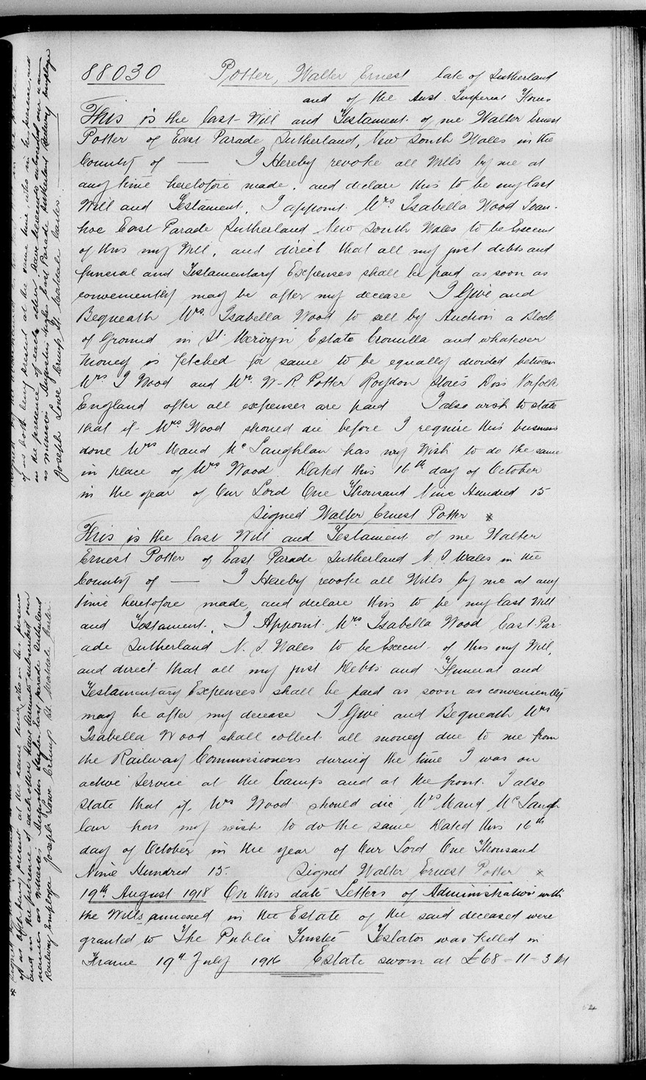
Walter has no known grave. Like so many of his battalion, Walter’s body was never recovered from the battlefield. His name is inscribed on the V.C. Corner Australian Cemetery and Memorial at Fromelles.
In New South Wales, Walter is remembered at:
- NSW Government Railways and Tramways Roll of Honour at Sydney’s Central Station,
- the Waterfall Roll of Honour (as W. E. Potter, marked with an asterisk for killed),
- the Sutherland Memorial School of Arts Honour Roll,
- and the Sutherland War Memorial near his home in East Parade.

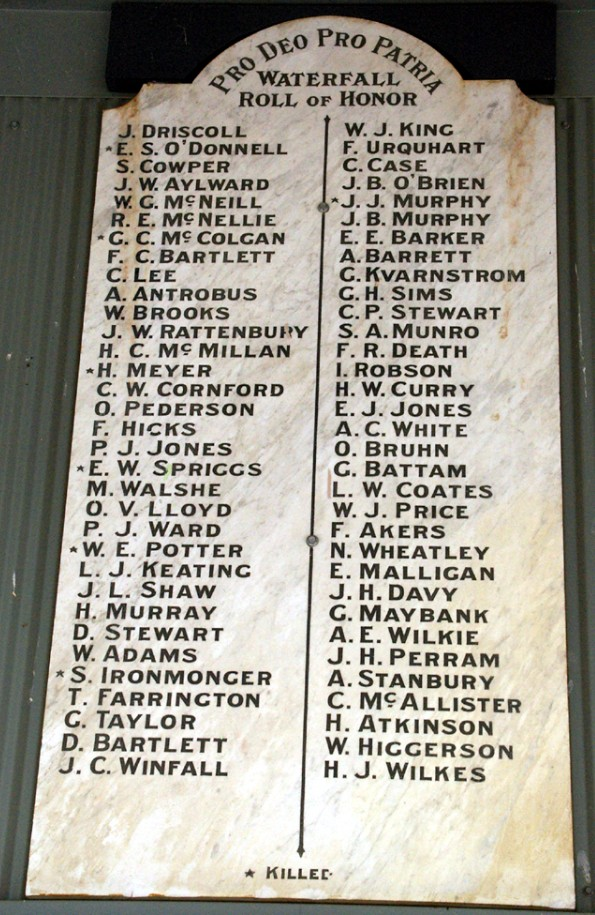
In his home village of Roydon, Norfolk, Walter’s name is carved on the St Remigius Church War Memorial alongside his neighbours who served and died.
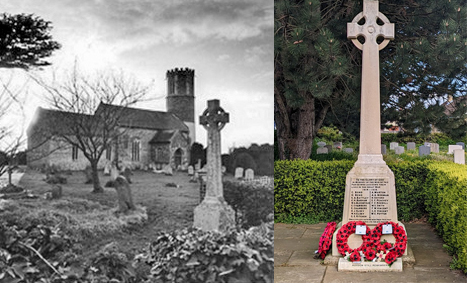
Legacy
Walter’s life stretched between two worlds — the village of Roydon in Norfolk where he was a Baker, and the railway townships of New South Wales where he built his new life.
More than a century later, his story is still being pieced together. Alison Leese, a descendant of one of Walter’s brothers, has been helping to uncover and preserve his memory, ensuring that his name and service are not forgotten on either side of the world. Alison has been to Fromelles to see the site where her ancestor fought and died.
Finding Walter
Walter’s remains have never been recovered, and he has no known grave. After the battle, the Germans recovered 250 Australian soldiers and placed them in a burial pit at Pheasant Wood. This grave was discovered in 2008 and since then efforts have been underway to identify these soldiers by DNA testing from family members.
As of 2024, 180 of the soldiers have been identified, including 15 of the 190 unidentified soldiers from the 53rd Battalion. We welcome all branches of Walter’s family to come forward to donate DNA to help with his identification. If you know anything of family contacts — especially from the Potter and Alderton lines, please contact the Fromelles Association. We hope that one day Walter will be named and honoured with a known grave.
Please visit Fromelles.info to follow the ongoing identification project and William’s story.
DNA samples are being sought for family connections to
| Soldier | Walter Ernest Potter (1890–1916) born Roydon or Raydon Norfolk |
| Parents | William Robert Potter (1854–1917) and Mary Ann Alderton (1853–) |
| Siblings | William James Potter (1874–1913) married Rosa Alice Mann | ||
| Alice Potter (1877–1945) medical nurse | |||
| Alfred Edward Potter (1881–1926) married Harriet R. Howes | |||
| Edith Ellen Potter (1884–1964) married George Ernest Chapman | |||
| Lilly May Potter (1887–1950) married Charles Edward Thurlow | |||
| Frederick Arthur Potter (1892–1964) married Sabina Martin |
| Grandparents | |||
| Paternal | William Potter (1831– ) and Mary Rose Harvey | ||
| Maternal | James Alderton (1829–?), Mary Ann Rash (1826–?) |
Seeking DNA Donors

Contacts
(Contact: carla@fromelles.info or geoffrey@fromelles.info).
(Contact: army.uwc@defence.gov.au or phone 1800 019 090).
Donations
If you are able, please contribute to the upkeep of this resource.
(Contact: bill@fromelles.info ).

